Coffee bean sack ingenious use of raw bean information detailed explanation of Manning coffee bean sack transformation into an one-shoulder bag
After drinking so much freshly roasted coffee, you must have received a lot of well-sealed coffee bean bags. But have you ever seen a sack with raw coffee beans?
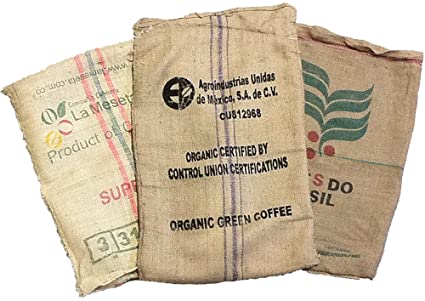
Don't underestimate these jute bags, they are by far the oldest coffee packaging material. According to the Food and Agriculture Organization of the United Nations, these sacks are 100% biodegradable, recyclable and very environmentally friendly. They are made from the most traditional natural fibers extracted from plants, jute or jute, and are durable and affordable. It plays an important role in transporting and storing coffee.
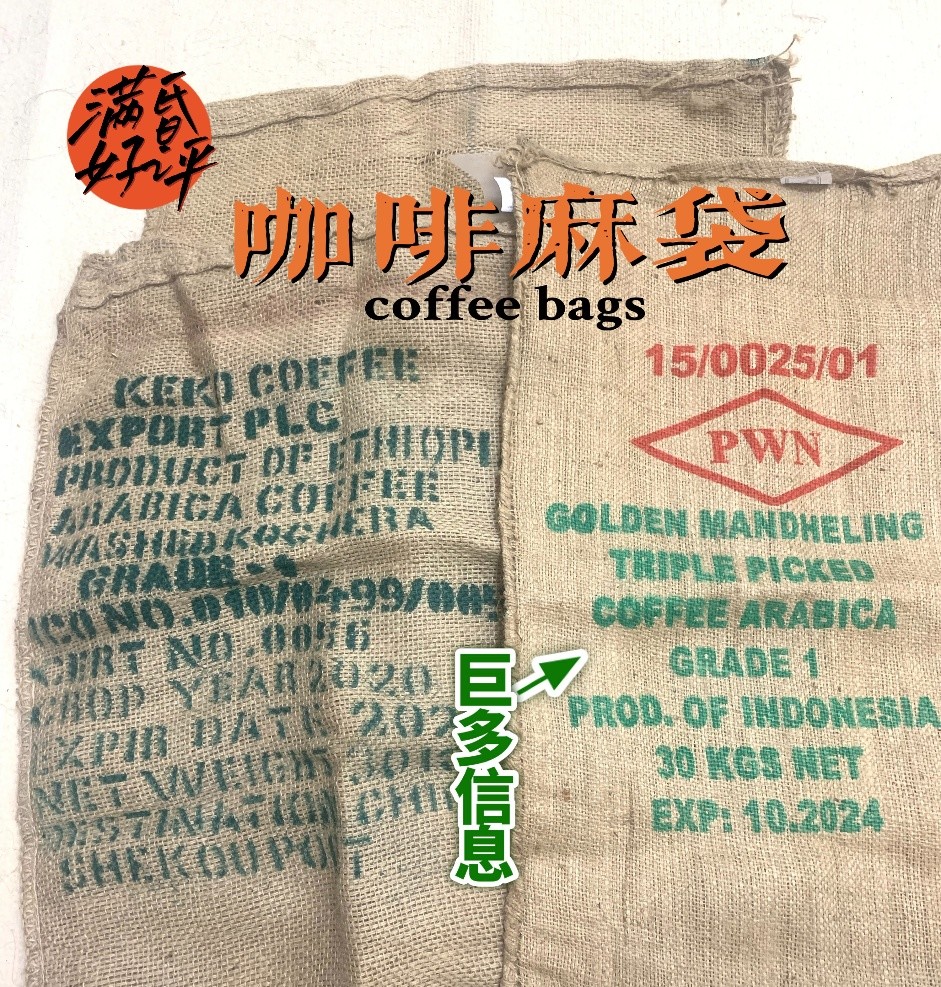
In addition, these sacks also contain a lot of information about raw coffee beans, such as the estates and cooperatives that produce coffee beans, the specifications, grades, processing methods, harvest years and weight of coffee beans. The aim is to let the coffee bean buyers have a clear understanding of the present and past lives of this coffee bean.
For example, let's take a look at this picture.
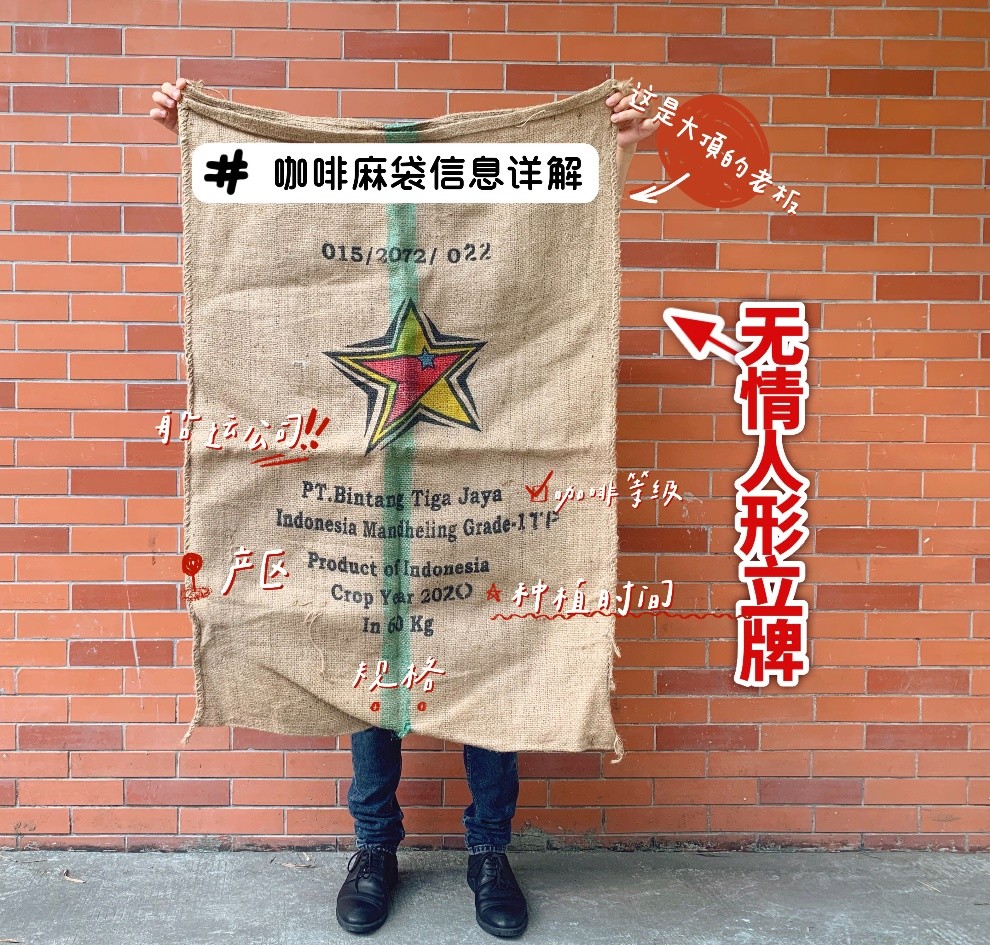
1 、 PT Bintang Tiga Java
At first, Da Ding was also very confused, and with the help of his boss and colleagues, he finally found out! PT Tiga Bintang Jaya is an international freight forwarder founded in 2004 in Zamboong City, Central Java Province, Indonesia. And coffee is one of the products they represent.
2. Manning Coffee
Mantenin coffee beans are produced in Sumatra, Indonesia, also known as Sumatra Coffee. The most famous is the Mantenin of Lake dopa and Lake Tawa in Sumatra, known as "Shuangman of the two lakes". Manning coffee does not specifically refer to a variety of beans, nor the name of origin, but is named after a tribe on the island of Sumatra, and only coffee beans produced on the island of Sumatra can be called manning beans.
3. Grade Grade1
The grade standards of raw beans are different in different coffee producing areas. Indonesian coffee beans are graded mainly according to the number of defective beans, supplemented by size. Indonesian coffee beans are mainly divided into six grades, namely G1-G6. With a base of 300 grams, the total defect rate of G1 is less than 11, the total defect rate of G2 is more than 12, the total defect rate of G3 is more than 26, the total defect rate of G4a is greater than 45, the total defect of G4b is greater than 61, less than 80, the total defect of G5 is greater than 81, and the total defect of G6 is greater than 151, less than 225. We can see from the bag that this coffee is Grade 1.
So. What does the following TP mean? There must be a lot of friends who don't know if it's right! In fact, TP (Triple pick) stands for three hand selections. Three times of manual selection of defective beans, how can the quality of coffee not be guaranteed?
4. Origin: Indonesia
5. Planting year
From the information provided by the sack, it is not difficult to see that the bag of coffee beans is in the 2020 season.
6. Specification: 60KG
When you see the little friends here, will you have the same worries as Da Ding? Where do these coffee sacks go when raw beans are roasted into ripe beans?
There is a website about the idea of coffee linen ribbon abroad. There ugly sacks are recycled and upgraded for a variety of purposes: sofa covers, pillowcases, dried vases, etc. There are many wonderful uses and unlimited creativity!

(photo Source: Internet)
So funny? Have one on that big roof! Coffee sack release bag transformation program has officially begun!
Step one: find a skilled tailor and tell her, "I want to make a bag out of this sack." If she agrees, then your plan will succeed. Leave the next steps to her ~ because I can assure you that you won't do it at home in front of the screen!
Friends who are interested in the steps of making bags can check the official account of the coffee workshop.
Finished product display:
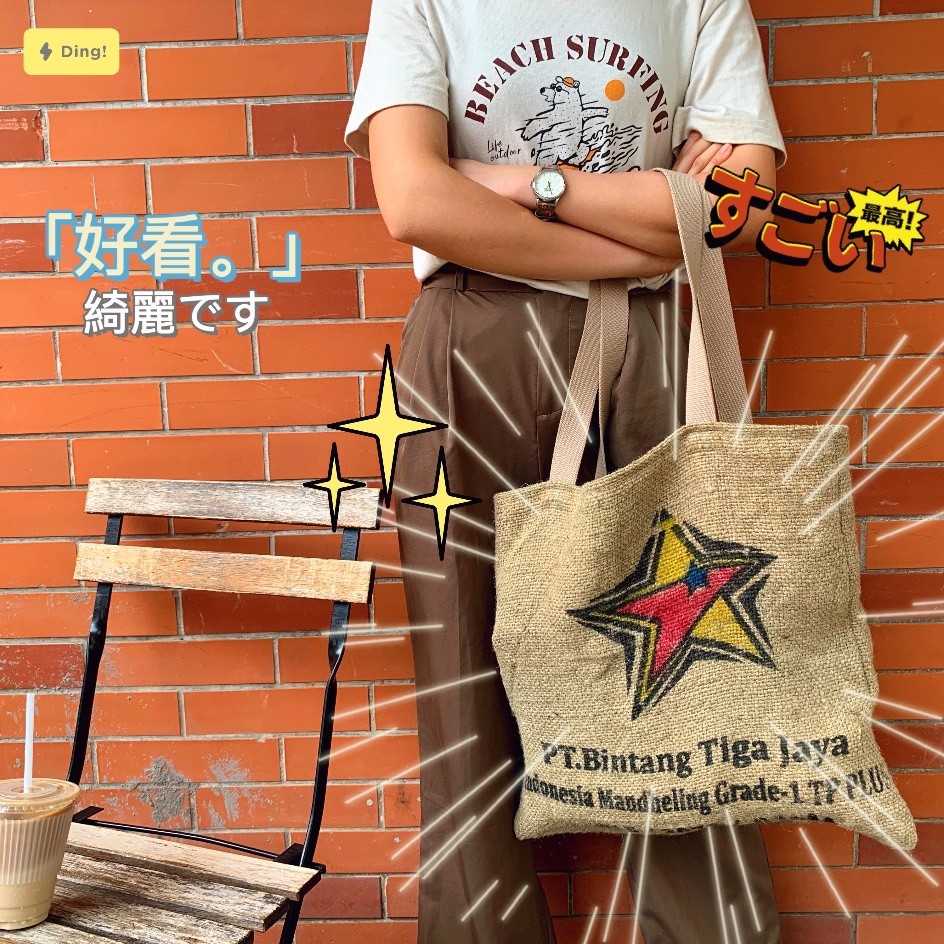

Important Notice :
前街咖啡 FrontStreet Coffee has moved to new addredd:
FrontStreet Coffee Address: 315,Donghua East Road,GuangZhou
Tel:020 38364473
- Prev

Is it cheap to bring your own cup of manner coffee? does it cost 5 yuan less? Which coffee shops have a discount on their own cups?
According to Chinanews.com Finance, flush Finance and Sina Finance and other media reports, domestic boutique chain brands have been accused of hiding serious food hygiene and safety risks by reducing their own cups by 5 yuan on behalf of "Manner". In the face of different shapes of cups brought by customers, Manner baristas did not disinfect the cups or change the one on their hands, Chinanews.com Finance said in a report.
- Next
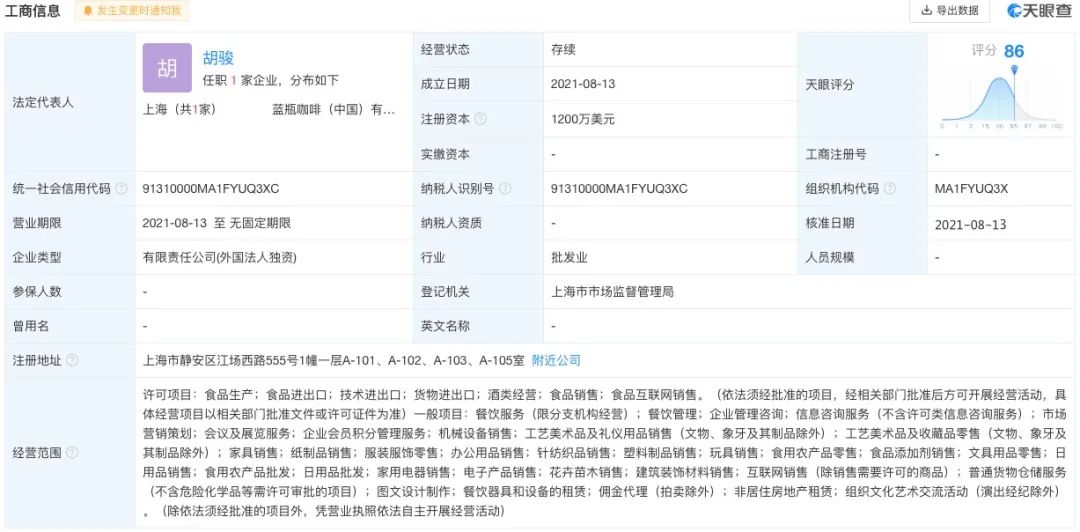
New Development of Blue bottle Coffee China Co., Ltd. Where is the first shop of bluebottle Blue bottle Coffee in Shanghai?
Today is September 7, which means it is a little closer to the landing of Blue bottle Coffee in Shanghai. In July this year, a comment on a "Blue Bottle blue bottle (Qiantan Taiguri store)" was called by the outside world as a signal that blue bottle coffee Blue Bottle Coffee is going to be located in Qiantan, Shanghai, and then industry insiders pointed out: blue bottle coffee will be this year at the earliest
Related
- Is espresso stored overnight in the refrigerator harmful to your body? Is frozen coffee better than freshly ground coffee?
- What parameters and proportions of water temperature should be used to grind and brew fresh coffee beans? Why can't I drink freshly roasted coffee right away?
- Customers have "changed" Manner's new products! Shop assistant: Please don't mess around!
- Remove sockets in customer areas at Starbucks stores?! Netizen: I won't go if I really tear it down
- What is the difference between the taste steps of sun-dried coffee and washed coffee? Why is sun-cured coffee sweeter and washed coffee sour?
- The recipe for salty grapefruit dirty is revealed! Coffee Festival salty grapefruit dirty coffee making materials parameters ratio milk share!
- How about the flavor of Sunlight 74158 at Sidamo Banshaha Mathieu Processing Factory in Ethiopia? 74158 Share the proportion of coffee brewing parameters!
- What effect does Italian American coffee with filter paper have? Will coffee taste better if it is put on filter paper at the bottom of the powder bowl?
- What is the color difference in coffee beans? What are the characteristics of honey processed coffee beans? Why are the anaerobically treated coffee beans uneven in color?
- How does novice Xiaobai quickly get started and make coffee? Newbies learn to make coffee by hand and share the specific steps and process process!

